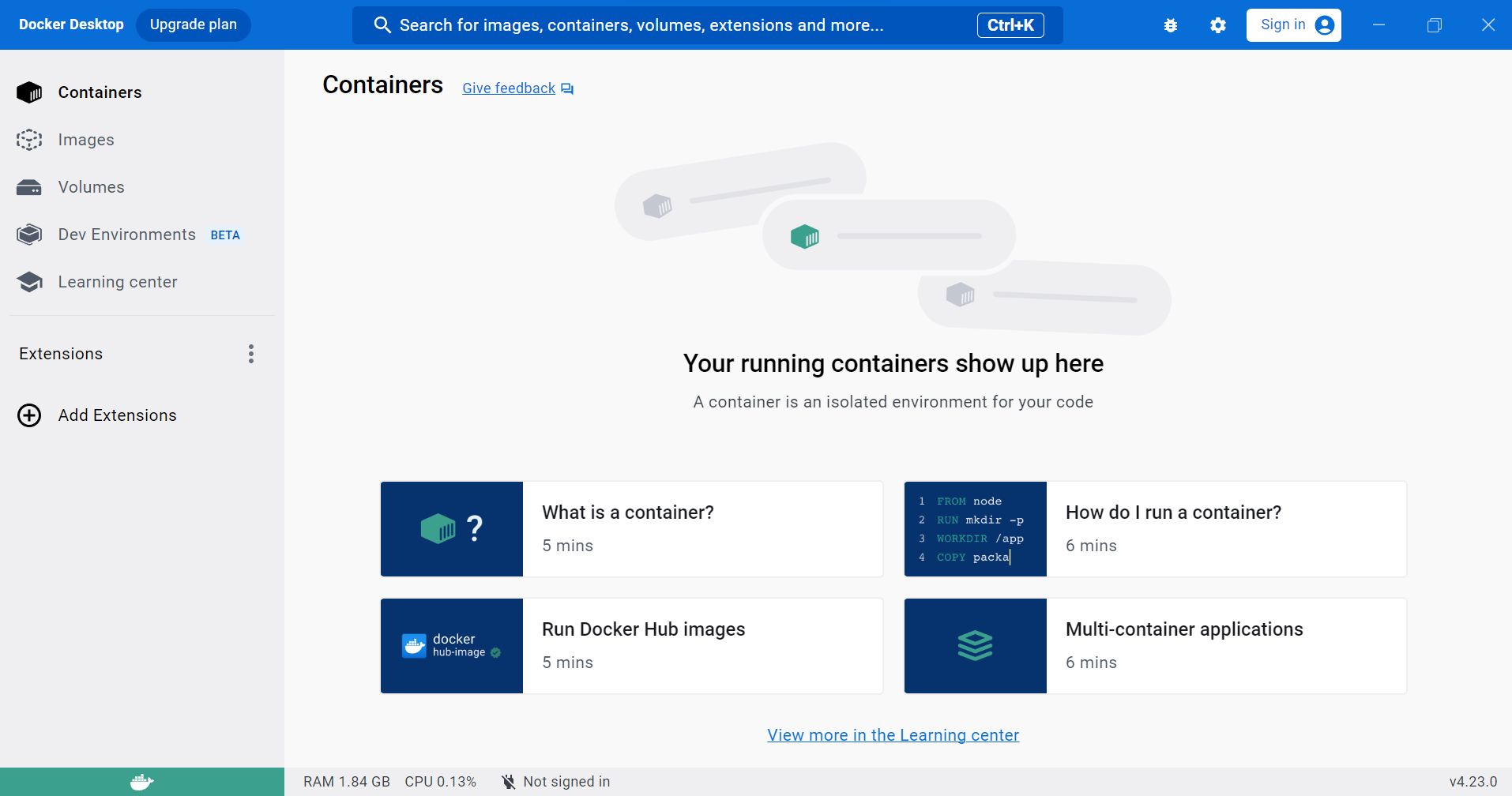Understanding Docker: A Beginner's Guide
Docker is a containerization platform that enables developers to build, ship, and run applications quickly and easily. Docker containers are lightweight and portable, and they can be run on any operating system that has the Docker Engine installed. Docker containers are created from images, which are essentially snapshots of a running application. Images can be created from scratch, or they can be pulled from a public registry, such as Docker Hub. In this post, we will go through how to install Docker Desktop on Windows and some of the common terms used in Docker such as Docker containers, images and volumes.
Docker Installation
Let’s start with the Docker installation on windows. Go the official website of Docker to download the application. On the homepage, you could see the “Download for Windows” button. Click on it and in couple of seconds the download starts automatically.

Once the download is completed, the installation process is as usual. You know what to do just click Next button. The installation process takes about 3-4 minutes. Once it’s complete you can click on the Close button. Now you have successfully completed the Docker installation on Windows.
Once you are done with the installation, let’s start the Docker. Head to the start menu and search for Docker Desktop and click on it. During the initial run, Docker will ask you to agree with their Docker Subscription Service Agreement. Docker is free for small business, personal and educational use. For professional use, it requires a paid subscription. Let's continue by Accepting the agreement.

After that a window appears asking for you to Sign Up. It's optional to Sign up. For now, let's click on 'Continue without signing in'. This will take you to the Docker Application screen. Now the Docker is successfully installed and running on your system. We don’t have any of the containers running on Docker yet. Before we do that let’s try to understand some basics terms used in Docker. If you look at the left side panel of Docker Desktop, you could see items like Containers, Images, Volumes, Dev Environments etc... Let's see in detail what each of them means.

Common Terms in Docker
Docker Images
Docker images are kind of like templates that are used to create Docker containers. These images usually consist of application code, dependencies, runtime environment etc. Docker images are used to build, deploy and run application in a consistent and reproducible way. Docker images can be created from scratch, or they can be pulled from a public registry, such as Docker Hub. Public registries contain a wide variety of Docker images, including images for popular applications, such as web servers, databases, and programming languages.
For example, you are developing a web application using Python. The whole web application can be created into a Docker image. Here, the image consists of:
Code - The python code that is used to program your application.
Dependencies - The python packages that you have used in your application.
Runtime - The python language itself, OS etc…
Once you have created the docker image, it can be used in any OS, Runtime. The only catch is that, it should have the Docker installed.
Docker Containers
Docker containers are a lightweight, portable, and isolated way to run applications. They package up all the necessary components for an application. Docker containers are created from Docker images, which are essentially templates for creating containers. Once an image has been created, it can be used to start multiple containers. Each container is isolated from the others, and it shares the underlying host operating system kernel. This makes Docker containers very efficient in terms of resource usage.
You can use the same image that you have created for your web application to launch multiple containers or instances of the same web application. You don't have to worry about code sharing, installing and configuring dependencies and runtimes each time, Docker will take care of those for you.
Docker Volumes
Docker volumes are ways to persist and share data in Docker. They are separate from the container's file system and provide a method for storing and sharing data between containers and the host machine. Docker volumes are used to handle data that should survive the lifecycle, such as databases, configuration files, or application logs. Without volumes, any data created or modified within a container is lost when the container is removed. Docker volumes provide a solution to this problem by enabling data to be stored persistently.
Types of Docker Volumes
Named Volumes: These are created and managed by Docker. You give them a user-friendly name, and Docker handles the details.
Host-Mounted Volumes: : You can mount a specific directory from the host machine into a container. This allows data to be shared between the host and container.
Anonymous Volumes: Docker can create an anonymous volume for a container when a named volume is not explicitly specified. These volumes have long, random names.
In conclusion, Docker has revolutionized the way we develop, ship, and run applications. It has become an essential tool for developers and DevOps professionals worldwide. In this post, we've explored the fundamental concepts of Docker, including containers, images, volumes. Going ahead you can expect more posts on Docker. So, get ready to embark on your Docker journey, and unlock the potential of containerization for your projects. Happy coding, and may your containers always run smoothly!

Nothing here yet

Joyal Baby
19 September 2023• 10 min readExplore a treasure of technical blog posts on Android, Big Data, Cloud, Python, and More!
© 2025 Nervo Tech. All Rights reserved.